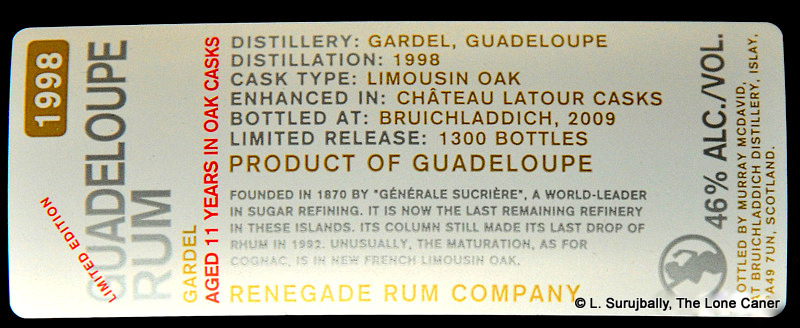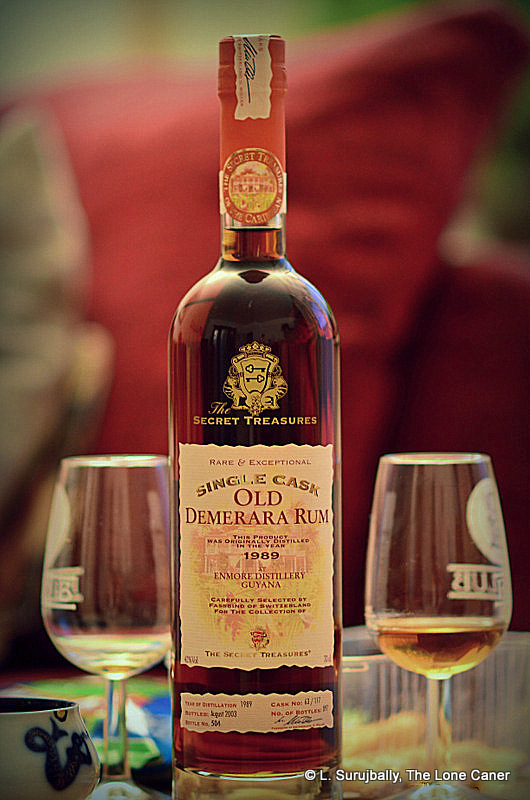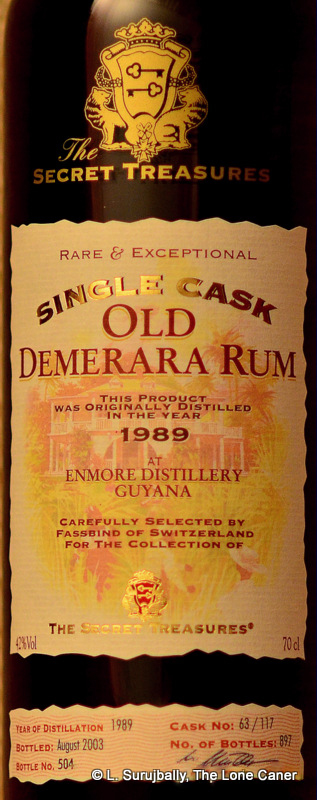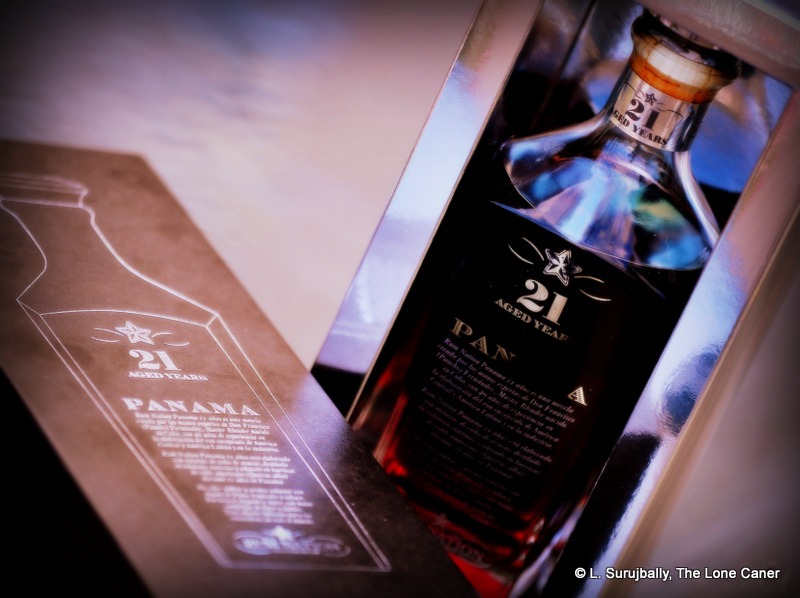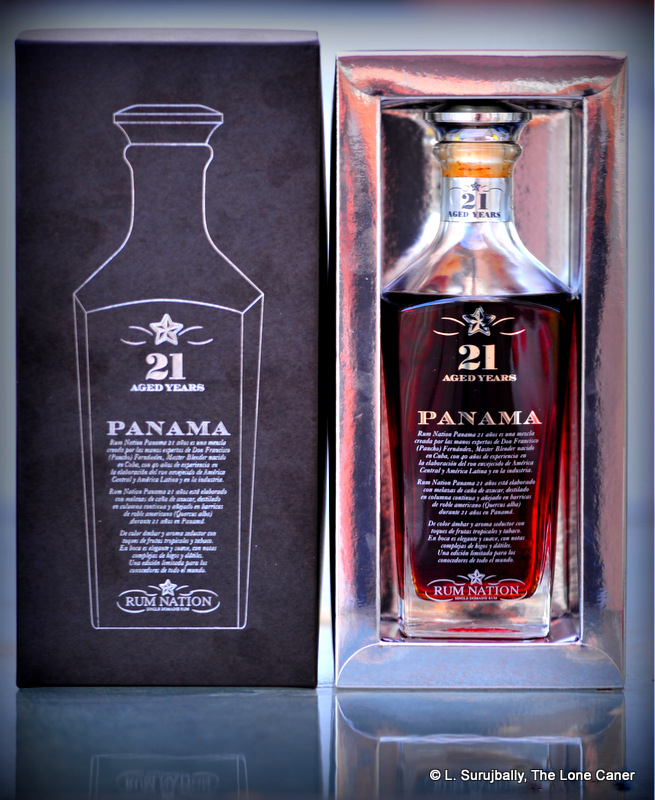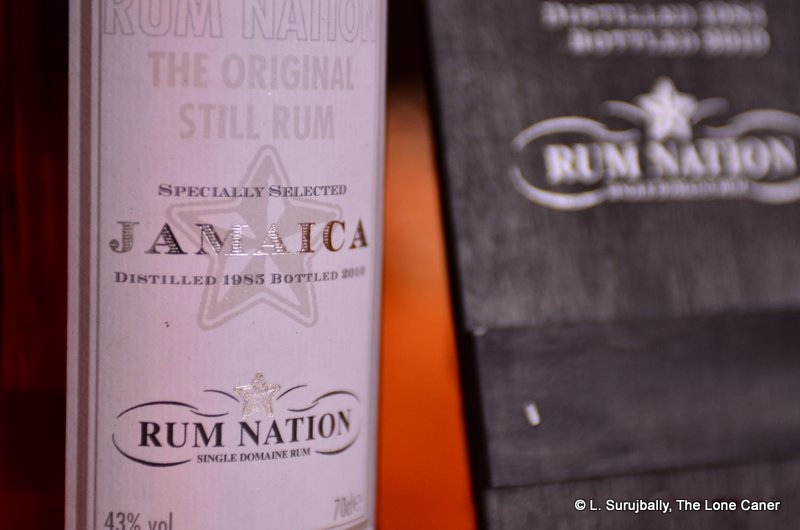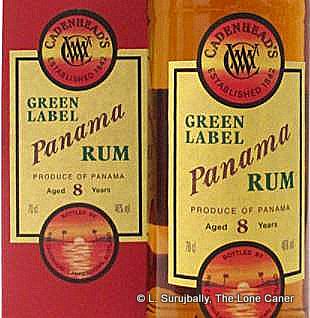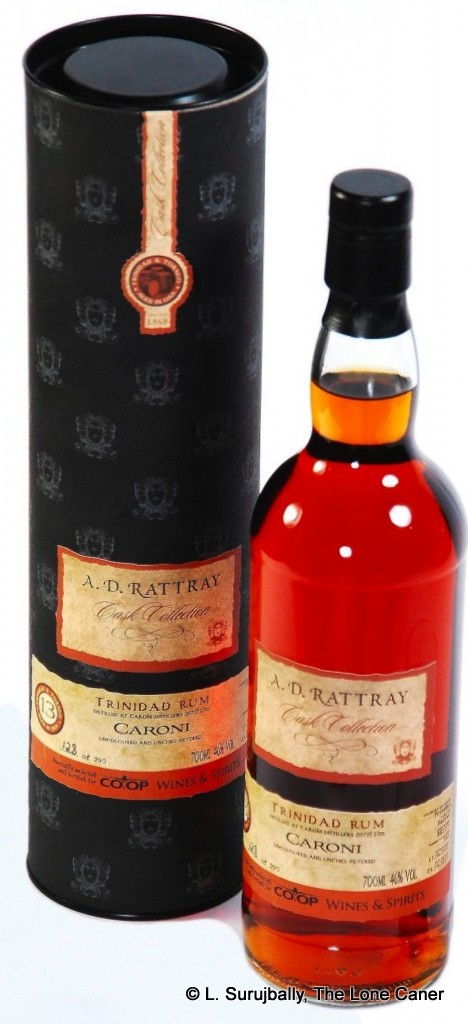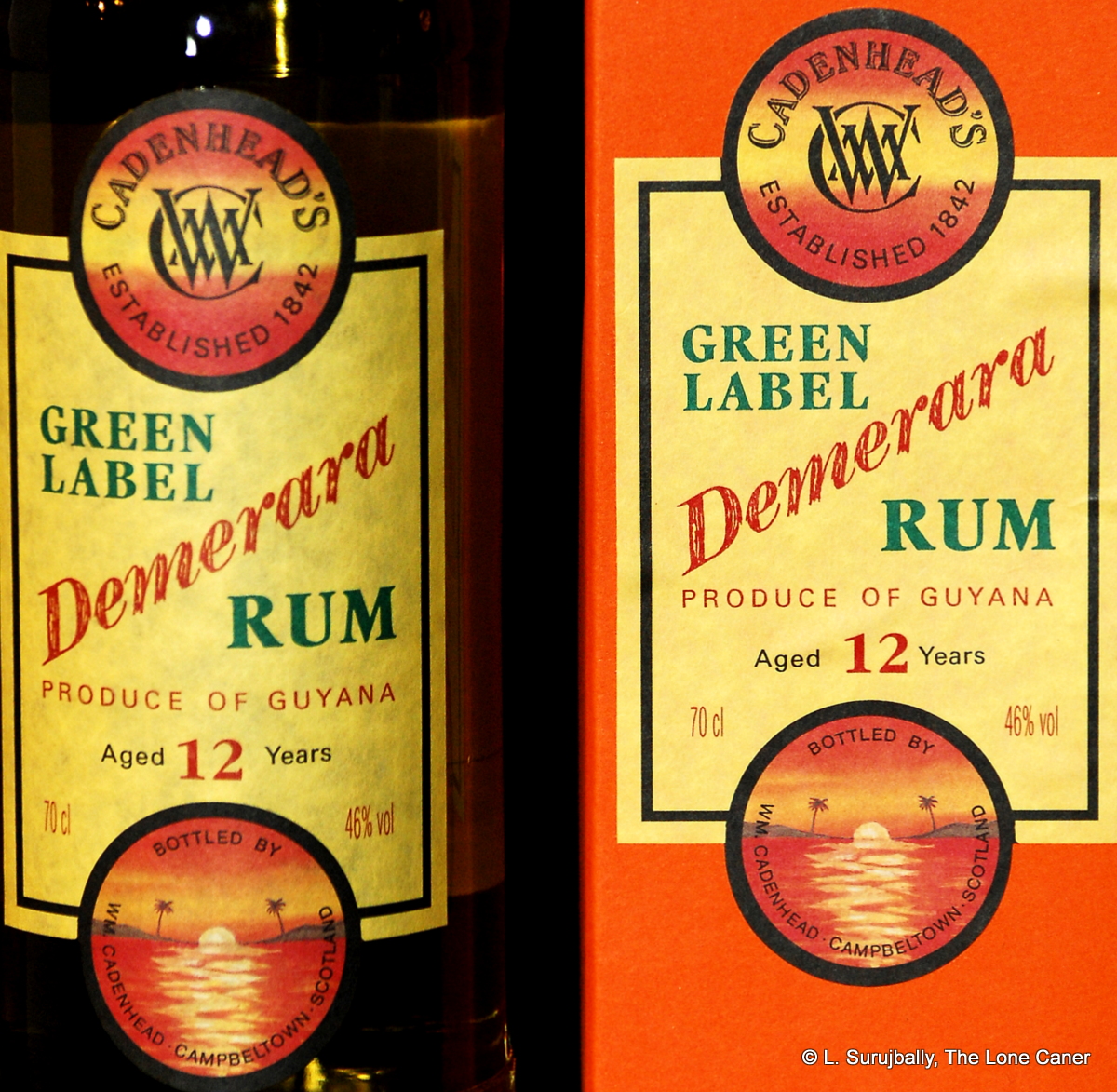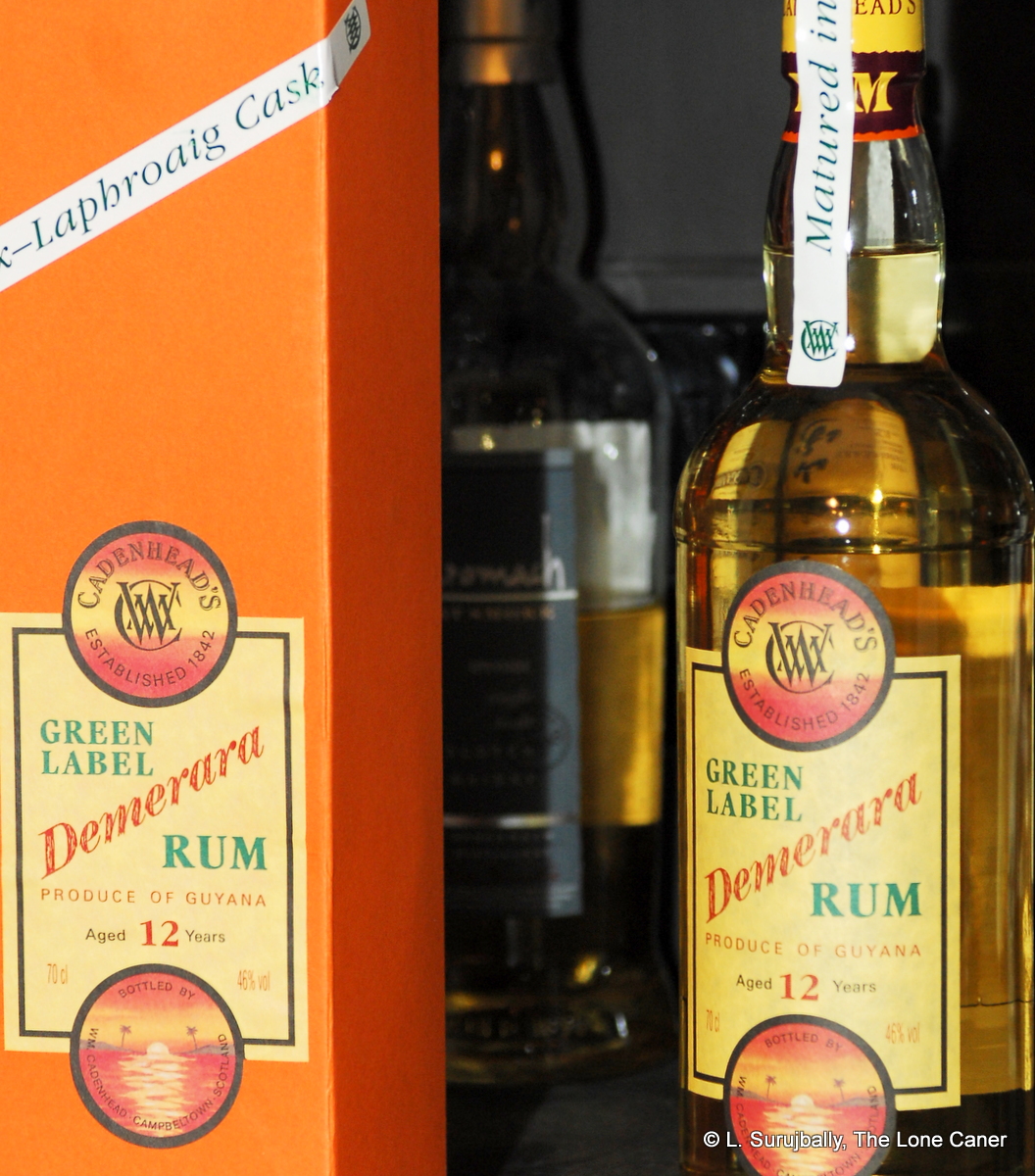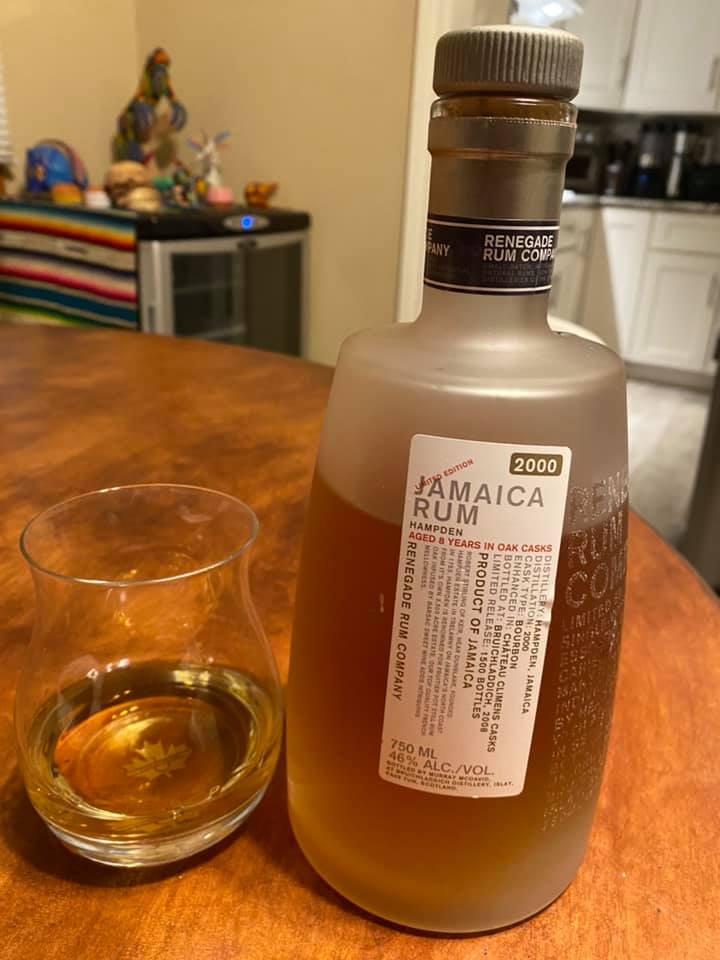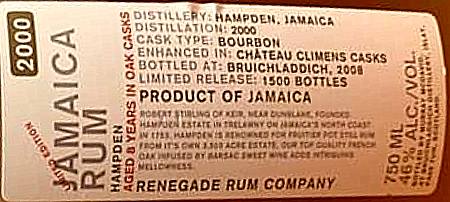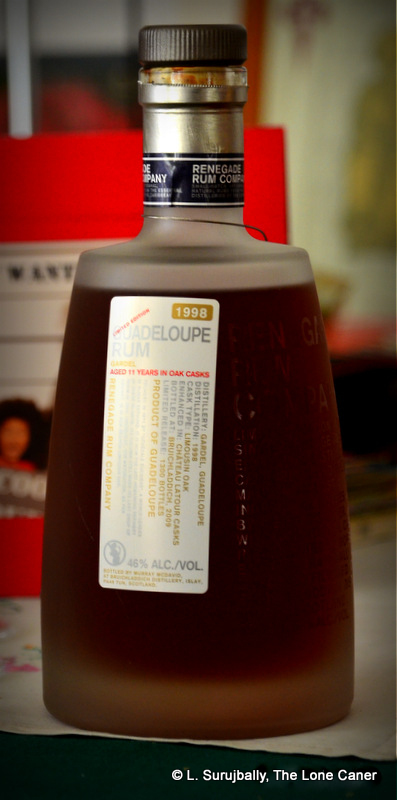 Never had a rum that tasted so much like a peated whisky. And yet….and yet….
Never had a rum that tasted so much like a peated whisky. And yet….and yet….
If ever there was a rum that exemplified the inconsistency of the Renegade line, this is it. I’m not saying it was a bad rum, just one that didn’t conform to any profile of rum that people could say they recognize as a rum. And in that fact lay (in my opinion) its failure.
Of course, like all Renegades, it was lovely to look at, with the now-familiar frosted glass enclosure and a label that gave as much information as one would wish. Column-distilled in 1998 at the Gardal distillery in Guadeloupe, bottled in 2009 with a limited run of 1300 bottles. All things are good, right?
And yet the beginning gave no hint of the surprising volte face to come, like Dick Francis’s horse skidding to an ignominious belly flop just shy of the finishing line in the 1950s. Consider the initial scents of this hay blonde product: it was soft and light and delicate, very much like a decent cognac, and this was not surprising, since it was aged for eleven years in Limousin oak casks and then enhanced (for three months, I think) in Chateau Latour casks…so some of that cognac finish came out in the aromas. Pineapple, red grapes just starting to ripen, a good rough red wine, mellowing into a leathery dry hint. Pretty damned good. And no hint of bite or snarl or bitchiness, in spite of the 46% bottling strength.
Yet the palate was where things (in my estimation) started to come unglued: the smoky and dry aromas came out full force, attended by the over-aggressive bridegroom of iodine and seaweed, of peat and brine that suggested not so much cognacs and Gallic savoire-faire, but the elemental hacking of a Gaelic invasion, complete with longboats and battle axes. WTF? Even after opening up, the rum could barely emerge from those heated flavours, and none of the first scents I discerned could make it past the claymores of the single malts. Why do I get the feeling Bruichladdich mischievously mixed up a cask from its whisky stocks, and is sniggering into a sporran somewhere?
So the arrival was great, the palate not to my taste, and the finish, in my opinion, vacillated hesitantly between the two. At 46% I’d expect a long, leisurely exit, and this was indeed the case, long, heated, dry and smoky, not displeasing in any way, with a faint nutty note batting my senses on the way out, as if to apologize for the palate.
So where do I stand on this whisky in sheep’s clothing? Not very positive, to be honest. The mouthfeel and texture on the tongue of this Renegade were, I thought quite good, and of course the opening scents were lovely. I’m just confused by that damned palate. The cognac profile I was expecting was utterly absent, while none of the lightness and floral scents of a true agricole were really in evidence. I acknowledge originality (even celebrate it), and I’m not a despiser of whiskies by any means – one can’t be a member of Liquorature for going on four years and not have gotten a real education in the subject from those who are incessantly beckoning me to the Dark Side – yet of all the ones I’ve tried, peats are my least favourite (sorry, friends of Islay). And so on that scale, the Renegade Guadeloupe fails for me.
I can’t deny its excellence on a technical level, which is why it scores so relatively well. But I’ll tell you this – if I wanted an Islay profile rum, I would not have spent €53 in the best rum shop I’ve ever seen (the Rum Depot in Berlin), but bought myself something else instead. Points to Renegade for pushing the envelope of what the definition of a rum is and can be, and congrats to people who love whisky who will marvel at the amalgam and congruence of their favourite libations (and probably tell me I’m out to lunch)…but for this rum lover, all it gets is a shake of the head, and a rum that’s left behind.
(#118.81/100)
Other Notes
- First published August 2012 on the Liquorature website
- The distillery of origin of this 1998 Guadeloupe rhum is something of a mystery, since the label (correctly) notes the Gardel distillery’s column still as having breathed its last in 1992, so what is the name doing on a label from six years later? Barrel Aged Thoughts noted that Damoiseau / Bellevue was said to have used the name for some limited 1998 releases. But it remains unclear and unproven, and so for the moment we have to leave that as an unresolved issue.
